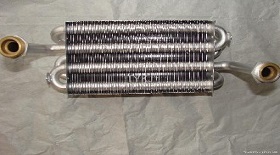Working principle of heat exchanger
In general, the solid wall (heat transfer surface) separates the fluids at different temperatures. Some of them also make the two fluids contact directly in the device for heat exchange.
The working principle of the paper core heat exchanger
When indoor air conditioning exhaust air and outdoor fresh air flow through the heat exchanger core respectively, because the gap between the fibers is very small, only small particle size of water vapor molecules can pass, and other large particle size of harmful gases or odor gas molecules can not pass, achieving the exchange of temperature and humidity.
During summer operation, fresh air obtains cooling energy from air conditioning exhaust, which lowers the temperature while the water vapor in the fresh air seeps into the fresh air under the action of partial pressure.
During winter operation, fresh air obtains heat energy from the exhaust air of the air conditioner, which makes the temperature rise, and the water vapor in the exhaust air seeps into the fresh air.
The working principle of aluminum core heat exchanger
The unit adopts a static cross-flow heat exchanger core with hydrophilic aluminum foil as the carrier and consists of several layers of heat exchanger units. The flow passages of the adjacent two layers of units are arranged in an orthogonal cross-section. The principle of the unit is that two air streams, indoor and outdoor, are introduced by the fan, and the indoor exhaust air is absorbed by evaporation of atomized water before the heat exchanger core is passed. The air temperature of indoor exhaust air is lower than the dew point temperature of outdoor exhaust air. Then it flows through the heat exchanger core in a cross way with outdoor fresh air. The heat is transferred from the high temperature side to the low temperature side through the heat transfer baffle. The outdoor fresh air after heat exchange is sent to the required room by the wind pipe.



